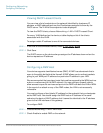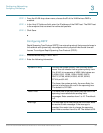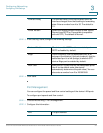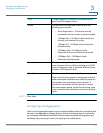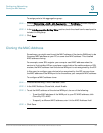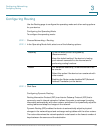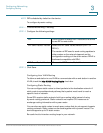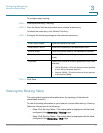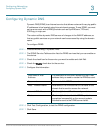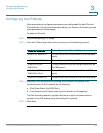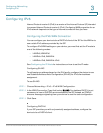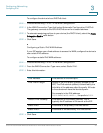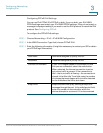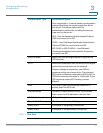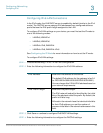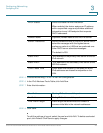
Configuring Networking
Configuring Dynamic DNS
Cisco RV130/RV130W Wireless Multifunction VPN Router Administration Guide 42
3
Configuring Dynamic DNS
Dynamic DNS (DDNS) is an Internet service that allows routers with varying public
IP addresses to be located using Internet domain names. To use DDNS, you must
set up an account with a DDNS provider such as DynDNS.com, TZO.com,
3322.org, or noip.com.
The router notifies dynamic DNS servers of changes in the WAN IP address, so
that any public services on your network can be accessed by using the domain
name.
To configure DDNS:
STEP 1 Choose Networking > Dynamic DNS.
STEP 2 The DDNS Service Table section lists the DDNS services that you can enable on
the device.
STEP 3 Check the check box for the service you want to enable and click Edit.
STEP 4 Check the Enable check box for the service.
STEP 5 Configure this information:
STEP 6 Click Test Configuration, to test the DDNS configuration.
STEP 7 Click Save.
Username/E-mail
Address
The username of the DDNS account or the e-mail
address that you used to create the DDNS account.
Password Password of the DDNS account.
Host / Domain Name Hostname of the DDNS server or the name of the
domain that is used to access the network
Internet IP Address (Read-only) Internet IP address of your device.
Status (Read-only) Indicates that the DDNS update has
completed successfully or the account update
information sent to the DDNS server failed.



